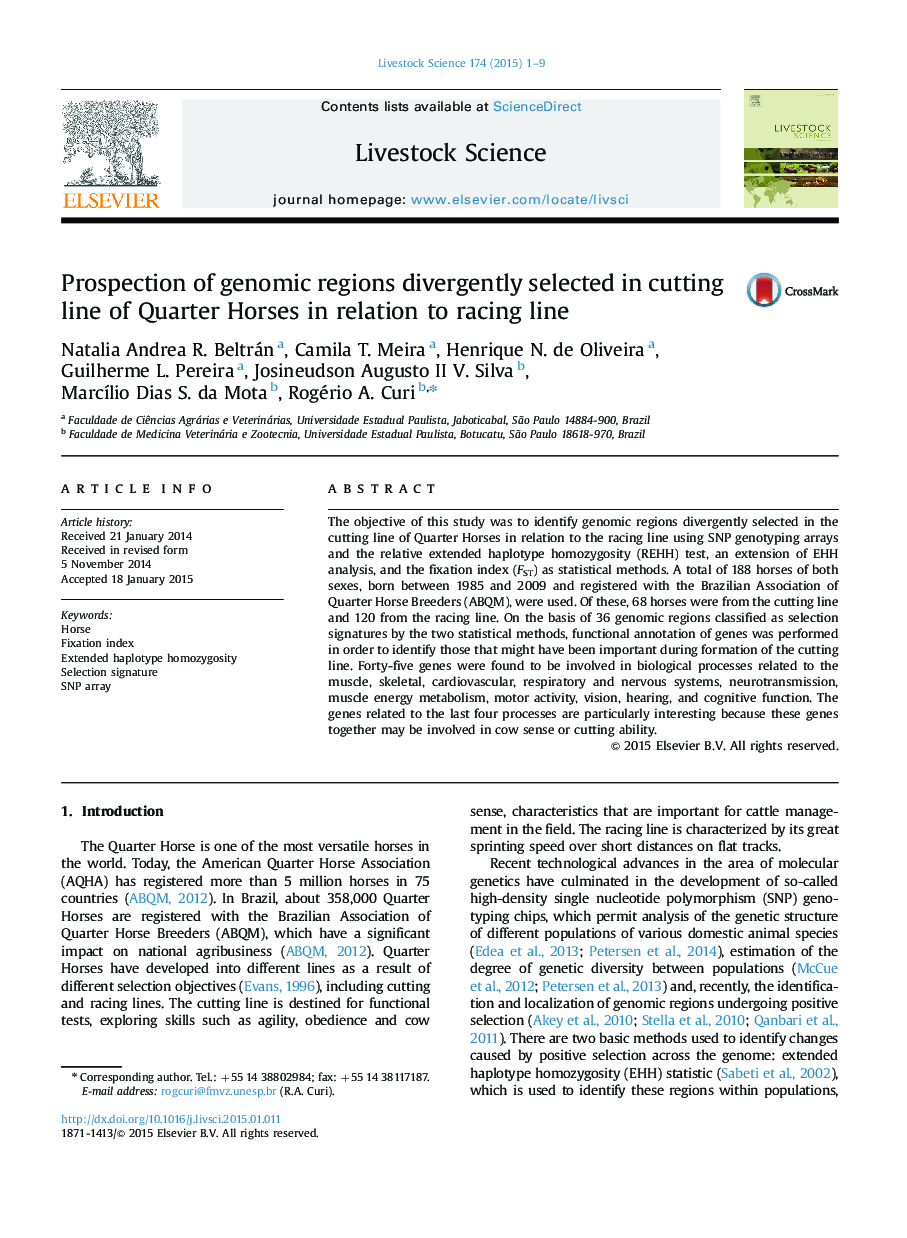| Article ID | Journal | Published Year | Pages | File Type |
|---|---|---|---|---|
| 5790045 | Livestock Science | 2015 | 9 Pages |
Abstract
The objective of this study was to identify genomic regions divergently selected in the cutting line of Quarter Horses in relation to the racing line using SNP genotyping arrays and the relative extended haplotype homozygosity (REHH) test, an extension of EHH analysis, and the fixation index (FST) as statistical methods. A total of 188 horses of both sexes, born between 1985 and 2009 and registered with the Brazilian Association of Quarter Horse Breeders (ABQM), were used. Of these, 68 horses were from the cutting line and 120 from the racing line. On the basis of 36 genomic regions classified as selection signatures by the two statistical methods, functional annotation of genes was performed in order to identify those that might have been important during formation of the cutting line. Forty-five genes were found to be involved in biological processes related to the muscle, skeletal, cardiovascular, respiratory and nervous systems, neurotransmission, muscle energy metabolism, motor activity, vision, hearing, and cognitive function. The genes related to the last four processes are particularly interesting because these genes together may be involved in cow sense or cutting ability.
Keywords
Related Topics
Life Sciences
Agricultural and Biological Sciences
Animal Science and Zoology
Authors
Natalia Andrea R. Beltrán, Camila T. Meira, Henrique N. de Oliveira, Guilherme L. Pereira, Josineudson Augusto II V. Silva, MarcÃlio Dias S. da Mota, Rogério A. Curi,
